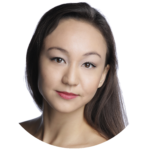While attending a dance workshop for Hamilton, I met a dancer who had no idea what Hamilton was. This put her at a disadvantage. The most important function of a Broadway dancer is to tell the story on stage, and this dancer couldn’t tell the story in a workshop, because she didn’t know the show.
If you’re fortunate enough to dance at a Broadway audition or any professional audition, it’s vitally important to walk into the room prepared.
First rule: Know Your Show.
Research is a vital part of the process. Listen to the show’s cast album ahead of time. Get to know the story. Watch any YouTube clips you can find, and pay extra attention to the dancers in the ensemble (or the lead role you want). You’ve worked hard to get to the audition, so do your homework!
Watch videos of the choreographer’s work. If possible, attend a choreographer’s workshop beforehand. Or, if the movement is hip hop, brush up on your skills with your favorite hip-hop class. If it’s jazz, whip out your heels and take a jazz class, etc.
Then, once you’re actually inside, forget everything except this:
RELAX.
Hundreds of dancers are seen in a short amount of time at professional auditions, especially Broadway calls. You’re crammed into a tiny, humid room with thirty to seventy other people.
First, you learn a short combination, and then you’ll be asked to perform that combination in small groups (usually four to six dancers).
Most times you only get one shot, so make it your best. Listen closely to the person running the audition. Don’t worry about what you have to prove; swallow your nerves and just dance.
At one of my first Broadway auditions, I was so excited to get the opportunity to dance that I forgot to focus on the actual work in front of me. I barely listened to what the choreographer wanted.
All I noticed was that the combination had high legs and turns. I could do that, no problem. But then it was time to perform in my small group. The choreographer said, “Remember, I want to see a character.”
Suddenly, I got confused. I hadn’t grasped the most important piece of information. It wasn’t about my dancing; it was about the story.
The best audition advice I ever received was from Stephanie Klemons, the current global supervising choreographer for Hamilton.
At a workshop, she told me: “Don’t worry about being good or being better. You’re here, aren’t you? You are enough.”
In other words, you don’t have to prove you’re a good dancer or a good actor.
You’re already a dancer with your own, unique performance quality. You already have a story inside you.
If you don’t get a callback from your first audition, don’t sweat it.
It doesn’t mean you should never audition for that show again. In fact, returning to an audition can sometimes be a huge advantage.
After all, you know the choreography now. The casting team has seen you before. And you get the chance to improve on your previous performance.
That shows passion, intelligence and a great work ethic—three things you need for a successful career.
Be authentic, be attentive, and be persistent. Dance your story.

Elizabeth Shew is a Portland, OR native and a New York-based dancer, writer, and creator. She is a graduate of The Ailey School and Fordham University and holds BFAs in Dance and English/Creative Writing. She has danced for choreographers Cindy Salgado, Jae Man Joo, Brice Mousset, Christopher Huggins and Taryn Kaschock Russell, among others. Recently, she participated in Cherice and Charissa Barton’s summer program, Axis Connect, and performed alongside the Alvin Ailey American Dance Theater in their annual piece *Memoria. *She is a current apprentice with BodyStories: Teresa Fellion Dance.
